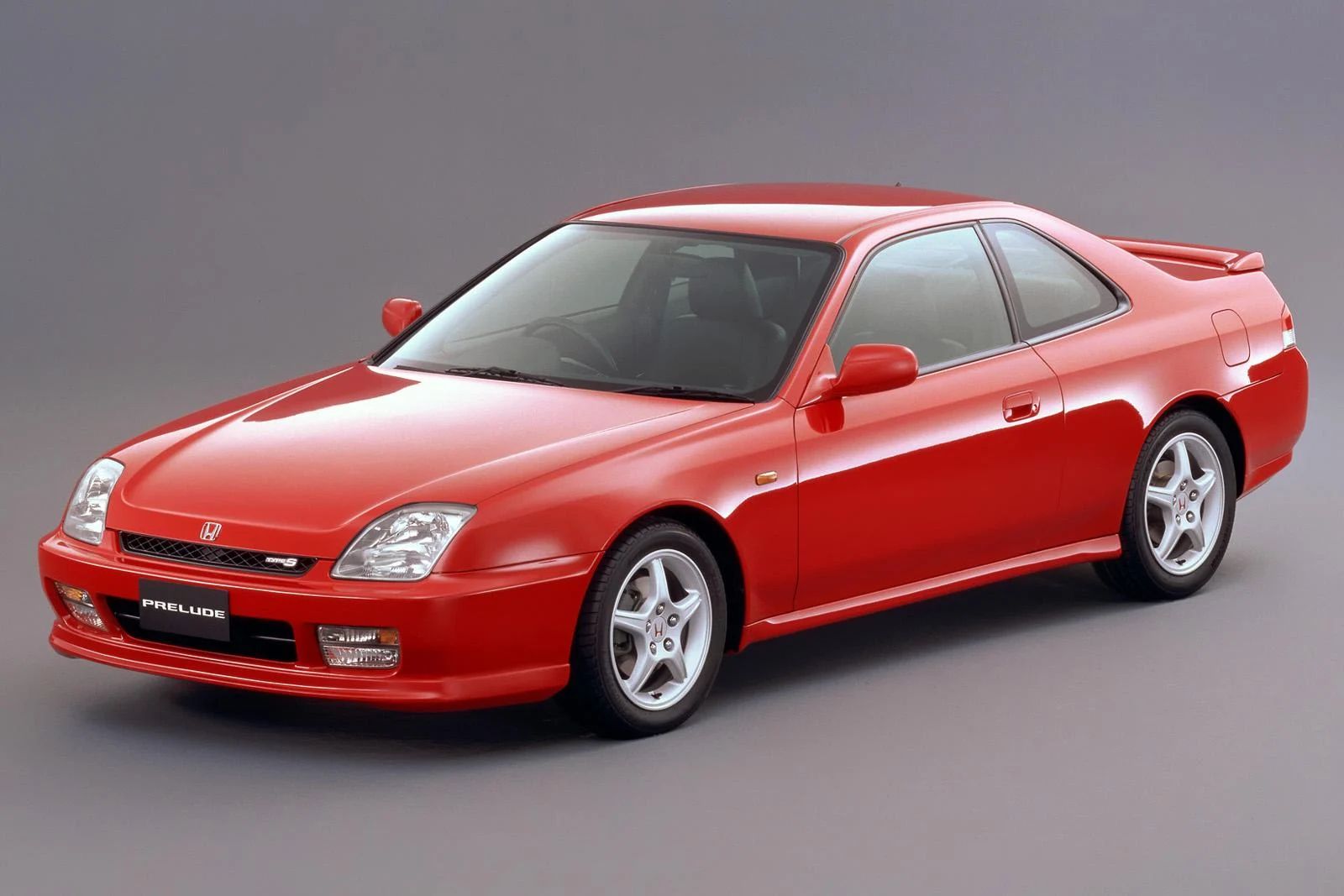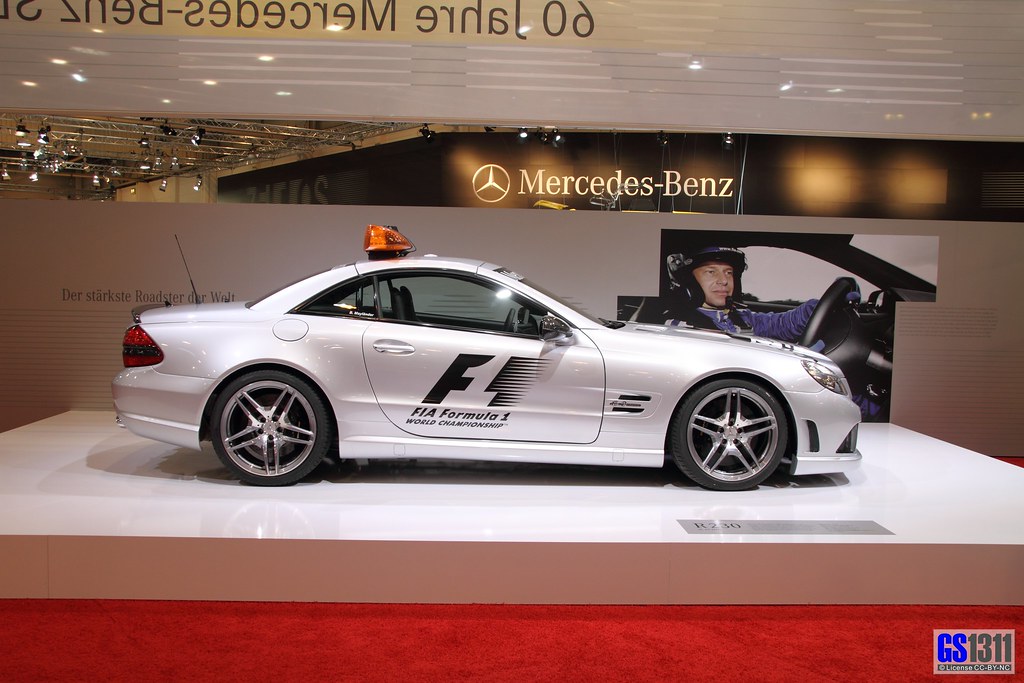
When it comes to car safety, we all want to know that our vehicles can protect us in the event of an accident. Paying close attention to safety ratings from established organizations like the Insurance Institute for Highway Safety (IIHS) and Consumer Reports is paramount for any new vehicle purchase. These ratings are not just numbers; they provide vital reassurance that our cars meet stringent standards designed to safeguard us on the road.
However, not all vehicles perform equally, and it’s essential to shed light on models that demonstrate room for improvement in occupant protection. Our aim is to equip you with the objective knowledge needed to identify potential safety pitfalls and make informed decisions. Sometimes, it feels as though certain cars barely pass the safety tests, falling short of the robust protection we all expect.
We delve deep into the data, analyzing rigorous crash test results and comprehensive evaluations from trusted sources like the IIHS and the National Highway Traffic Safety Administration (NHTSA). By presenting clear, factual insights, we empower you to prioritize your safety and the well-being of your loved ones on every journey, steering clear of models that may compromise on critical safety performance.
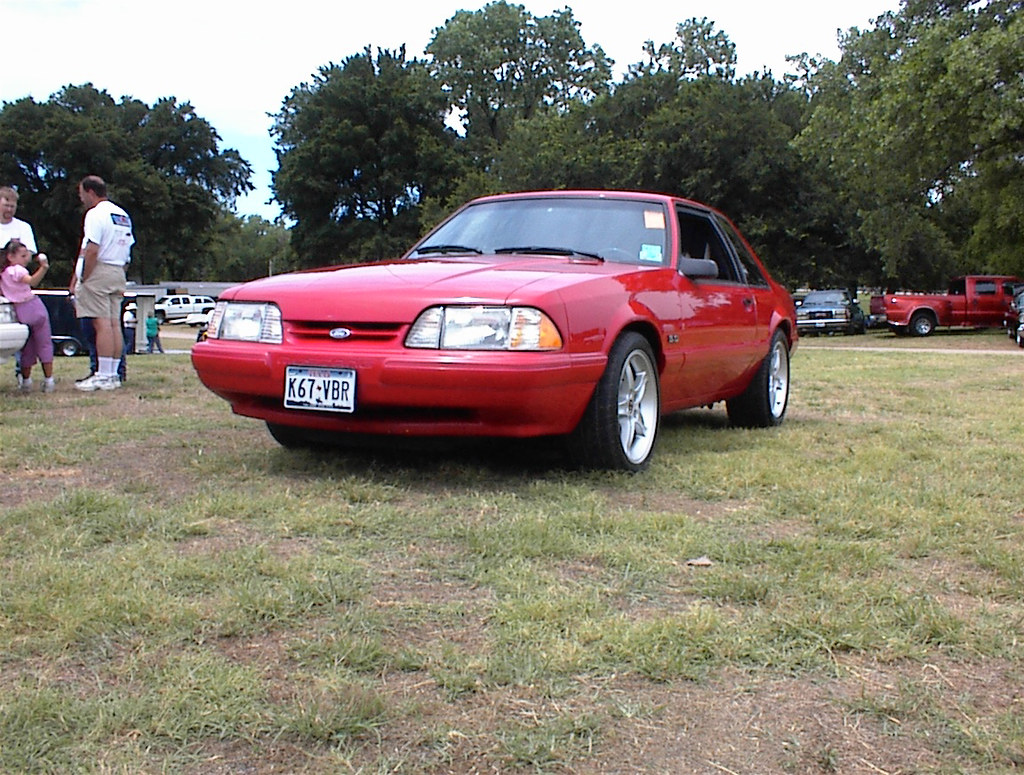
1. 2025 Ford Mustang Coupe
The 2025 Ford Mustang Coupe, a vehicle celebrated for its performance, style, and attitude, continues this tradition with sharper looks and powerful engine options. From the turbo four-cylinder to the V8, it is designed to deliver thrills. However, for consumers prioritizing crash protection, a detailed review of its safety profile reveals specific areas that warrant consideration beneath its performance-focused exterior.
The National Highway Traffic Safety Administration (NHTSA) granted the 2025 Mustang Coupe a five-star overall rating, but a closer examination of the detailed scores is crucial. Rear side-impact protection, a key measure for occupant safety in certain collisions, received a four-star rating. Additionally, the vehicle exhibited a 7.9% rollover risk, a factor that should be carefully weighed, especially given the dynamic characteristics of this performance vehicle.
Further insights from the Insurance Institute for Highway Safety (IIHS) highlight potential structural weaknesses. The Mustang Coupe earned a “Marginal” rating in the structure and safety cage category, indicating potentially weaker lower body protection and clear signs of structural strain during testing. Concerns also extend to child passenger safety, as LATCH anchor accessibility and ease of use for child seats were rated “Marginal,” which is a notable point for families.
While the 2025 Mustang Coupe includes standard safety features like forward collision warning and crash-imminent braking, many advanced driver-assistance systems such as lane keeping assist and adaptive cruise control are often optional. For a car that appeals to a demographic that might benefit significantly from these aids, this availability gap in standard equipment is an important detail for consumers to consider when evaluating their overall safety package.
Car Model Information: 2016 Ford Mustang GT
Name: Ford Mustang
Caption: 2018 Ford Mustang GT 5.0
Aka: Ford T5 (Germany)
Manufacturer: Ford Motor Company
Production: March 1964 – present
ModelYears: 1965–present
Class: Unbulleted list
BodyStyle: Unbulleted list
Layout: Front-engine, rear-wheel-drive layout
Categories: 1970s cars, 1980s cars, 1990s cars, 2+2 coupés, 2000s cars
Summary: The Ford Mustang is an American automobile manufactured and marketed by Ford since 1964, as Ford’s longest nameplate in continuous production. Currently in its seventh generation, it is the fifth-best selling Ford car nameplate. The namesake of the “pony car” automobile segment, the Mustang was developed as a highly styled line of sporty coupes and convertibles derived from existing model lines, initially distinguished by its pronounced “long hood, short deck” proportions.
Originally predicted to sell 100,000 vehicles yearly, the 1965 Mustang became the most successful vehicle launch since the 1927 Model A. Introduced on April 17, 1964 (16 days after the Plymouth Barracuda), over 400,000 units were sold in its first year; the one-millionth Mustang was sold within two years of its launch. In August 2018, Ford produced the 10-millionth Mustang; matching the first 1965 Mustang, the vehicle was a 2019 Wimbledon White convertible with a V8 engine.
The success of the Mustang launch led to multiple competitors from other American manufacturers, including the Chevrolet Camaro and Pontiac Firebird (1967), AMC Javelin (1968), and Dodge Challenger (1970). It also competed with the Plymouth Barracuda, which was launched around the same time. The Mustang also had an effect on designs of coupes worldwide, leading to the marketing of the Toyota Celica and Ford Capri in the United States (the latter, by Lincoln-Mercury). The Mercury Cougar was launched in 1967 as a unique-bodied higher-trim alternative to the Mustang; during the 1970s, it included more features and was marketed as a personal luxury car.
From 1965 until 2004, the Mustang shared chassis commonality with other Ford model lines, staying rear-wheel-drive throughout its production. From 1965 to 1973, the Mustang was derived from the 1960 Ford Falcon compact. From 1974 until 1978, the Mustang (denoted Mustang II) was a longer-wheelbase version of the Ford Pinto. From 1979 until 2004, the Mustang shared its Fox platform chassis with 14 other Ford vehicles (becoming the final one to use the Fox architecture). Since 2005, the Mustang has used the D2C platform, unique to the Mustang.
Through its production, multiple nameplates have been associated with the Ford Mustang series, including GT, Mach 1, Boss 302/429, Cobra (separate from Shelby Cobra), and Bullitt, along with “5.0” fender badging (denoting 4.9 L OHV or 5.0 L DOHC V8 engines).
Get more information about: Ford Mustang
Buying a high-performing used car >>>
Brand: Ford Model: Mustang
Price: $29,261 Mileage: 24,710 mi.
Read more about: Beyond the Icons: 13 Overlooked Pony Cars That Command Respect and Deserve a Second Look
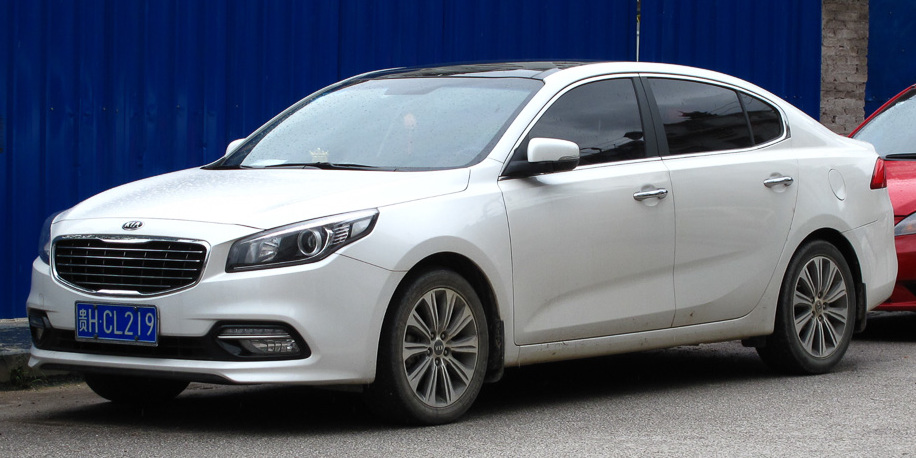
2. 2025 Kia K4
The 2025 Kia K4 marks a new era for Kia’s compact sedan lineup, replacing the Kia Forte with an aggressive design, a tech-heavy interior, and increased cabin space. It aligns with modern car shopper expectations, offering a bold digital interface, enhanced safety features, and advanced cruise control. While it presents a competitive package, a thorough review of safety test results indicates that its initial appeal may not reflect comprehensive crash protection.
Despite an overall five-star rating from the NHTSA, the 2025 Kia K4, specifically models produced before February 2025, received a “Poor” score in the updated IIHS moderate overlap front test. This rating is particularly significant because the test assesses protection in a common type of frontal collision, including for rear occupants, where the K4 demonstrated clear vulnerabilities.
The “Poor” IIHS rating revealed concerning issues regarding occupant restraint and injury risk for rear passengers. Dummy movement was described as uncontrolled, suggesting inadequate restraint systems to manage impact forces effectively. The risk of chest injury for the rear passenger dummy was marked as “Marginal,” highlighting a specific area of concern. Although headlights, seat belt reminders, and LATCH anchors were rated “Acceptable,” these positive points do not fully offset the serious frontal crash performance issues.
Adding to these findings, the 2025 Kia K4 registered a 9.9% rollover risk. This, coupled with the “Poor” frontal crash rating for rear occupants, suggests that despite its modern redesign, the K4’s overall crash performance falls short of optimal safety standards. Consumers prioritizing robust all-around protection, especially for rear passengers, should carefully evaluate these detailed safety findings.
Car Model Information: 2025 Kia K4
Name: Kia K4
Manufacturer: Kia
ModelCode: CL4
Production: 2024–present
ModelYears: 2025–present (North America)
Assembly: unbulleted list
Class: Compact car
Layout: Front-engine, front-wheel-drive
Engine: Petrol engine,Hyundai Smartstream engine#G3LE,Hyundai Smartstream engine#G4FM,Hyundai Smartstream engine#G4FP,Hyundai Smartstream engine#G4NS
Transmission: Manual transmission,Automatic transmission,8-speed automatic,Dual-clutch transmission,Continuously variable transmission
Related: Hyundai Elantra#CN7
BodyStyle: Sedan (automobile)
Platform: Hyundai-Kia K3 platform
Predecessor: ubl
Wheelbase: 2720 mm
Abbr: on
Length: ubl
Width: 1850 mm
Height: 1420 mm
Weight: convert
Caption: 2025 Kia K4 LX Sedan (Canada)
Drivetrain: Mild hybrid
Powerout: ubl
Categories: All Wikipedia articles written in British English, Articles with short description, CS1 Spanish-language sources (es), Cars introduced in 2024, Cars of Mexico
Summary: The Kia K4 is a compact car manufactured by South Korean automaker Kia. It was introduced in March 2024 as a replacement for the Forte/K3/Cerato, while the K3 nameplate was transferred to a subcompact car.
The car was first introduced on 21 March 2024, and was fully introduced on 27 March 2024, at the 2024 New York International Auto Show. It is available as a 4-door sedan and a 5-door hatchback.
Get more information about: Kia K4
Buying a high-performing used car >>>
Brand: Kia Model: K4
Price: $20,970 Mileage: 14,219 mi.
Read more about: Gear Up for Goodbye: 7 Beloved Models Waving Farewell to Manual Transmissions in 2025
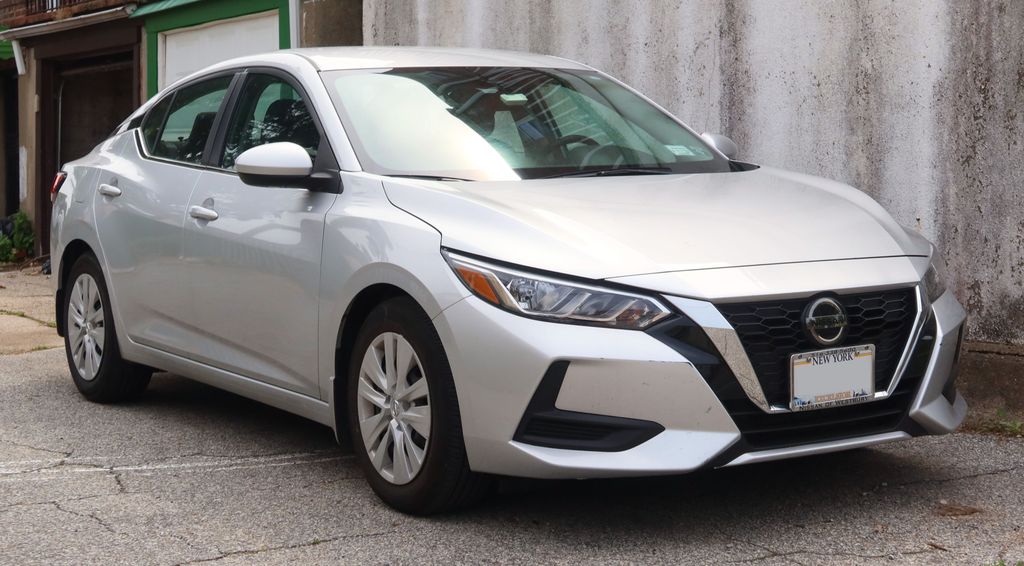
3. 2025 Nissan Sentra
The 2025 Nissan Sentra typically includes standard safety technologies such as forward collision warning, lane departure alert, blind-spot detection, and crash imminent braking. This comprehensive suite contributes to its initial perception of safety, supported by a five-star overall rating from the NHTSA. However, a closer look at detailed crash data reveals some important limitations, particularly in passenger protection.
Despite its standard safety tech and general NHTSA rating, the Sentra’s frontal crash performance for passengers received a four-star rating, indicating a notable dip in protection for front occupants in head-on collisions. More critically, the IIHS’s updated moderate overlap front test resulted in a “Marginal” rating for the Sentra. This updated assessment specifically evaluates rear-seat safety, and in this test, the Sentra’s restraints proved inadequate, leading to dummy movement that suggested a clear risk of head and chest injuries for rear passengers.
Further undermining the Sentra’s safety profile are its scores in other crucial evaluations. Its side-impact test achieved an “Acceptable” rating, which, while passing, is not a top-tier score for a contemporary vehicle. Pedestrian crash prevention capabilities also received a “Marginal” rating, particularly in low-light conditions, which is a growing concern for safety in urban environments. A “Poor” headlight rating and a 9.9% rollover risk further compound the safety concerns.
A recent recall also affected some 2025 Sentra models due to issues with driver’s seat security, adding to a list of concerns. While the Sentra remains a practical daily driver, its performance in newer, more stringent crash tests, especially concerning rear-seat occupant protection and pedestrian safety, indicates that it lags behind competitors that have made more significant strides in comprehensive safety across all seating positions and various crash scenarios.
Car Model Information: 2024 Nissan Sentra S
Name: Nissan Sentra
Caption: 2021 Nissan Sentra SR (B18; Canada)
Manufacturer: Nissan
Aka: Nissan Sunny
Production: 1982–present
Class: Subcompact car
Predecessor: Nissan Sunny#B310
Categories: 1990s cars, 2000s cars, 2010s cars, 2020s cars, All Wikipedia articles written in American English
Summary: The Nissan Sentra is a series of automobiles manufactured by the Japanese automaker Nissan since 1982. Since 1999, the Sentra has been categorized as a compact car, while previously it occupied the subcompact class. Until 2006, Sentra was a rebadged export version of the Japanese Nissan Sunny, but since the 2013 model year, Sentra is a rebadged export version of the Sylphy. The Sentra nameplate is not used in Japan. Many other countries in Latin America sell their versions of the Sunny as the Sentra. In Mexico, the first three generations of the Sentra were known as the Nissan Tsuru (Japanese for crane), and the B13 model was sold under that name until 2017, alongside the updated models badged as Sentra.
In North America, the Sentra currently serves as Nissan’s compact car, despite being rated as a mid-size car by the EPA due to its interior volume since the 2007 model year. While previous Sentras were subcompacts, the Sentra has grown over the years, with the Nissan Versa having replaced the Sentra in the entry-level area.
The Sentra name was created for Nissan by Ira Bachrach of NameLab, and Bachrach describes the origin as “Nissan wanted consumers to understand that it was quite safe even though it was small. The word Sentra sounds like central as well as sentry, which evokes images of safety.”
Get more information about: Nissan Sentra
Buying a high-performing used car >>>
Brand: Nissan Model: Sentra
Price: $17,999 Mileage: 24,255 mi.
Read more about: Built to Last: 10 Legendary Vehicles That Rarely Need a Major Engine Overhaul
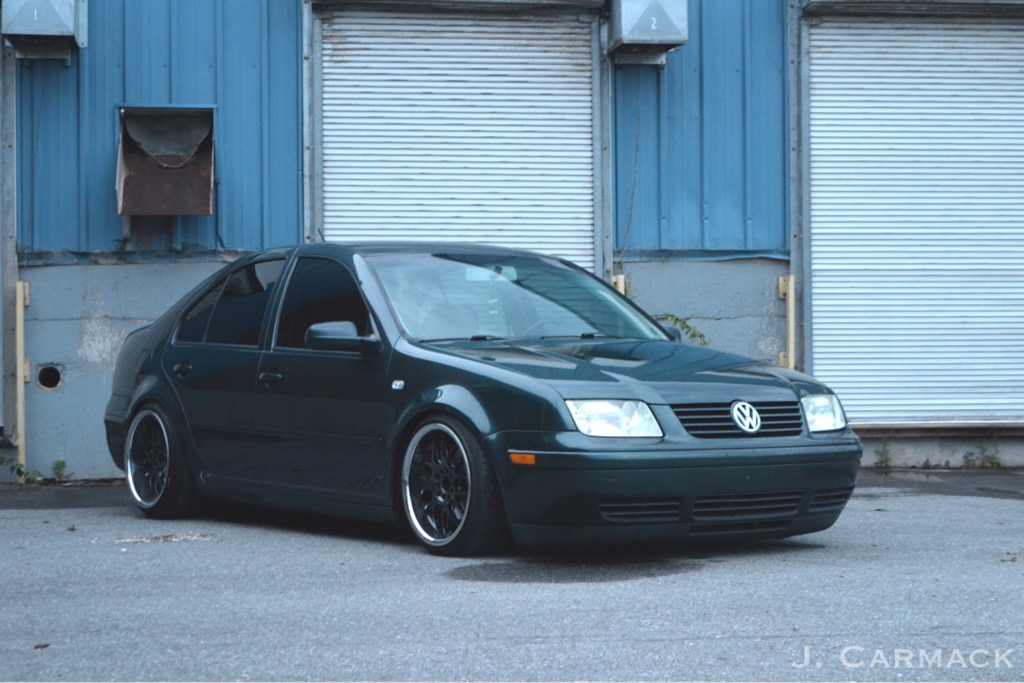
4. 2025 Volkswagen Jetta
The 2025 Volkswagen Jetta maintains its reputation as a practical and reliable vehicle, offering a mild refresh with exterior elegance and interior tech tweaks. It retains its familiar 1.5-liter turbo engine and now includes Volkswagen’s IQ.DRIVE suite as standard, bundling lane keeping, automatic emergency braking, and forward collision warning. The NHTSA’s five-star overall rating supports its perceived safety, yet a closer look at the detailed data raises several red flags for consumers.
Despite the positive overall NHTSA rating, the Jetta’s frontal crash ratings, both for the driver and front passenger, dropped to four stars. This suggests that specific areas of protection in head-on collisions may not be optimal. The Insurance Institute for Highway Safety (IIHS) also flagged the Jetta’s seat belt reminders as “Poor,” indicating a potential deficiency in a fundamental system designed to ensure occupant restraint.
Furthermore, the standard front crash prevention system, a key active safety technology, only “barely scraped by with a ‘Marginal'” rating from the IIHS. This implies that its effectiveness in preventing or mitigating frontal crashes might not be as robust as desired when compared to systems in class-leading vehicles. Injury scores from IIHS testing were also concerning, with “Marginal” ratings for the driver’s pelvis and the rear passenger’s torso, pointing to potential injury risks in these areas.
While side crash scores were solid, a significant 13% rollover risk introduces a notable concern regarding the vehicle’s stability in certain scenarios. Even child seat anchor usability was rated merely “Acceptable,” lagging behind rivals that offer more comprehensive and user-friendly designs. Although the Jetta received good ratings on its structure cage and the small overlap front test, these collective issues suggest areas for improvement that potential buyers should consider carefully.
Car Model Information: 2011 Volkswagen Jetta SEL
Name: Volkswagen Jetta
Production: 1979–present
Class: Compact car
Sp: uk
Categories: 1980s cars, 1990s cars, 2000s cars, 2010s cars, All-wheel-drive vehicles
Summary: The Volkswagen Jetta () is a compact car/small family car manufactured and marketed by Volkswagen since 1979. Positioned to fill a sedan niche slightly above the firm’s Golf hatchback, it has been marketed over seven generations, variously as the Atlantic, Vento, Bora, City Jetta, Jetta City, GLI, Jetta, Clasico, and Sagitar (in China).
The Jetta has been offered in two- and four-door saloon / sedan and sometimes as five-door wagon / estate versions. Since the original version in 1980, the car has grown in size and power with each generation. By mid-2011, almost 10 million Jettas have been produced and sold all over the world. As of April 2014, Volkswagen marketed over 14 million, becoming its top selling model.
Get more information about: Volkswagen Jetta
Buying a high-performing used car >>>
Brand: Volkswagen Model: Jetta
Price: $9,961 Mileage: 46,722 mi.
Read more about: Unearthing Automotive Gold: 14 Surprise Gems That Blew Away All Expectations
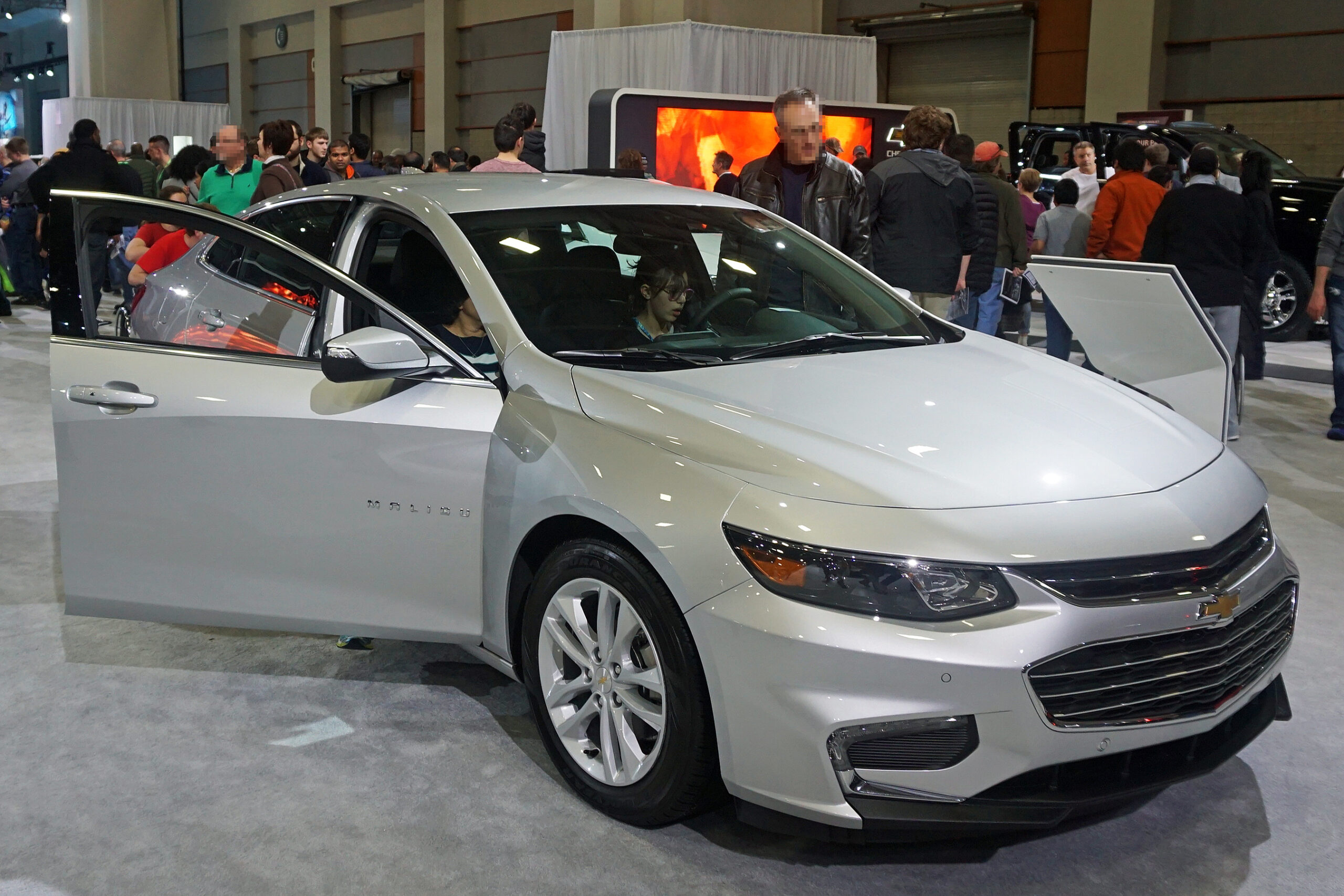
5. 2025 Chevrolet Malibu
The 2025 Chevrolet Malibu concludes nearly six decades of Chevy sedan history, as the brand transitions its focus. This final model offers basic standard safety features, including automatic emergency braking, forward collision warning, and lane departure alert, and earned a five-star overall rating from the NHTSA. However, in today’s automotive safety landscape, these features are considered a baseline, and a deeper dive into crash performance reveals notable concerns.
A critical point of concern lies in its active safety systems: crash-imminent braking only meets federal standards on higher trim levels, and its dynamic brake support system surprisingly “doesn’t meet them at all.” This inconsistency means consumers, especially those opting for lower trims, might not receive the expected level of protection from these vital crash avoidance technologies.
More significant issues emerged from updated IIHS testing. The Malibu’s side-impact protection was rated “Poor,” highlighting substantial deficiencies in safeguarding occupants during side collisions. Concurrently, the vehicle’s structural cage “didn’t hold up” in testing, indicating a fundamental weakness in maintaining occupant space. The front crash pedestrian test also received a “Poor” rating, signifying inadequate protection for vulnerable road users.
Injury risks for the driver’s head and neck were rated “Poor,” while rear-seat and driver protection received “Marginal” marks for head safety in the updated side-impact tests. Even smaller, yet important, safety details fell short: headlights and child seat anchors scored “Marginal,” and LATCH usability was similarly rated “Marginal.” For midsize sedan buyers prioritizing robust and comprehensive safety, these findings suggest that more secure alternatives are available.
Car Model Information: 2023 Chevrolet Malibu FWD 1LT
Name: Chevrolet Malibu
Manufacturer: Chevrolet
ModelYears: 1964–1983,1997–2025
Class: Mid-size car
Layout: Front-engine, rear-wheel-drive layout
Predecessor: Chevrolet Chevelle
Successor: Chevrolet Celebrity
Caption: Ninth generation Chevrolet Malibu
Categories: 1970s cars, 1980s cars, 1990s cars, 2000s cars, 2010s cars
Summary: The Chevrolet Malibu is a mid-size car that was manufactured and marketed by Chevrolet from 1964 to 1983 and from 1997 to 2025. The Malibu began as a trim-level of the Chevrolet Chevelle, becoming its own model line in 1978. Originally a rear-wheel-drive intermediate, GM revived the Malibu nameplate as a front-wheel-drive car in 1997.
Named after the coastal community of Malibu, California, the Malibu has been marketed primarily in North America, with the eighth generation introduced globally. Malibu production in the US ended in November 2024, as the Fairfax plant is being retooled for the upcoming second-generation Chevrolet Bolt. The Malibu is now the last sedan to have been sold by Chevrolet in the US.
Get more information about: Chevrolet Malibu
Buying a high-performing used car >>>
Brand: Chevrolet Model: Malibu
Price: $20,995 Mileage: 48,071 mi.
Read more about: Remember These? 13 Rides That Went From Sought-After to Stale.
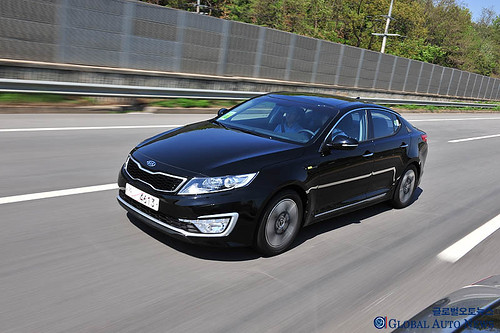
6. 2025 Kia K5
The 2025 Kia K5 presents a compelling package with a sleek design, comfortable interior, and standard driver-assistance technologies like Forward Collision-Avoidance Assist and Lane Keeping Assist. Higher trims offer even more advanced systems, enhancing its appeal. Primarily built in the U.S., it holds a five-star overall rating from the NHTSA, suggesting comprehensive safety coverage. However, a closer look at recent IIHS evaluations, particularly concerning rear seat protection, challenges this impression.
The updated IIHS moderate overlap front test, which now incorporates a rear passenger dummy for a more thorough assessment, yielded a “Poor” overall rating for the Kia K5. This is a critical finding, indicating that the vehicle’s design and restraint systems may not adequately protect rear occupants in a common type of frontal collision, despite its otherwise modern appeal.
The detailed IIHS report specifically noted that rear head and neck protection “didn’t hold up,” and the seatbelt system demonstrated “marginal performance.” Crucially, dummy movement during the test raised red flags, signaling weak rear restraints that could increase the risk of severe injury in a frontal crash. These findings are particularly relevant for families and individuals who frequently transport passengers in the rear seats.
Adding to these concerns, the K5’s side-impact test also received a “Marginal” rating, further questioning the vehicle’s overall performance in real-world side collisions. While the K5’s front crash prevention systems function reliably and its standard tech offers value, these key areas falling short in newer safety evaluations suggest that its five-star image doesn’t fully translate to robust all-around crash protection.
Car Model Information: 2021 Kia K5 LX
Name: Kia Optima/K5
Caption: Kia K5 (DL3)
Manufacturer: Kia
Aka: Kia Magentis (2000–2010),Kia Optima (2000–2020),Kia Lotze (2005–2010)
Production: 2000–present
Class: Mid-size car
Layout: Front-engine, front-wheel-drive layout,Front-engine, four-wheel-drive layout
Predecessor: Kia Credos
ModelYears: 2001–present
Categories: 2010s cars, All Wikipedia articles written in American English, All articles with unsourced statements, Articles containing Korean-language text, Articles with short description
Summary: The Kia K5 (Korean: 기아 K5), formerly known as the Kia Optima (Korean: 기아 옵티마), is a mid-size car manufactured by Kia since 2000 and marketed globally through various nameplates. First generation cars were mostly marketed as the Optima, although the Kia Magentis name was used in Europe and Canada when sales began there in 2002. For the second-generation models, Kia used the Kia Lotze and Kia K5 name for the South Korean market, and the Magentis name globally, except in the United States, Canada, Malaysia and the Middle East, where the Optima name was retained until the 2021 model year. The K5 name is used for all markets since the introduction of the fifth generation in 2019.
Get more information about: Kia K5
Buying a high-performing used car >>>
Brand: Kia Model: K5
Price: $14,728 Mileage: 114,405 mi.
Read more about: Beyond the Badges: 14 Low-Key Trucks That Quietly Outperformed Expectations
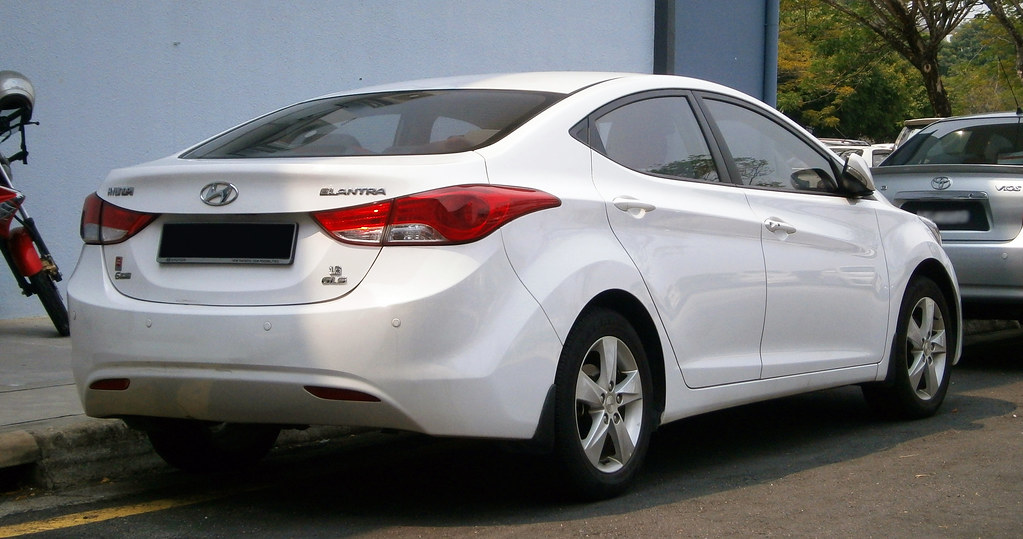
7. 2025 Hyundai Elantra
The 2025 Hyundai Elantra often attracts buyers with its competitive pricing and a comprehensive SmartSense package, which includes standard safety features like forward collision avoidance, lane-keeping assist, and blind-spot alerts. Paired with a user-friendly infotainment system and a five-star NHTSA rating, the Elantra initially appears to offer a solid, safe experience for daily driving. However, recent IIHS crash results reveal a concerning decline in its occupant protection performance.
In the updated IIHS moderate overlap front test, which now includes a rear passenger dummy for a more rigorous evaluation, the Elantra received a “Marginal” rating. This downgrade is particularly disappointing, given that the model was a “Top Safety Pick+” just last year, highlighting a significant step backward in a critical area of safety, especially for rear occupants.
The detailed IIHS report specifically identified a critical failure in rear-seat safety: while the front restraints performed adequately, the rear seat “failed to keep the dummy secure.” This deficiency was evidenced by the dummy’s shoulder belt slipping toward the neck and the lap belt sliding into the abdomen, resulting in a “Poor” rating for restraint performance in the rear. These findings indicate a heightened risk of severe injury for rear passengers during a frontal collision.
Compounding these issues, the Elantra has a documented history of safety-related complaints dating back to 2009, suggesting that this recent performance drop may reflect ongoing underlying challenges rather than an isolated incident. While certain elements like seat belt reminders and child seat anchors received “Acceptable” ratings, and its pedestrian detection and headlights tests scored well, the notable decline in updated frontal crash protection for rear occupants makes its otherwise positive ratings difficult to reconcile with a truly comprehensive safety profile.
Beyond the models already discussed, other vehicles on the market also present safety profiles that warrant careful consumer consideration. Our ongoing analysis of crash test data and reliability reports aims to provide a comprehensive picture, extending our focus to models that have demonstrated significant safety gaps, whether due to design, aging platforms, or specific test failures. We continue to empower you with the objective information necessary to make informed choices, ensuring your vehicle truly prioritizes occupant protection.
Car Model Information: 2025 Hyundai ELANTRA SEL Sport
Name: Hyundai Elantra/Avante
Manufacturer: Hyundai Motor Company
Aka: Hyundai Avante,Hyundai Lantra (1990–2000, Australia and Europe),Hyundai i30 Sedan (2020–present, Australia)
Production: 1990–present
Class: Compact car
Layout: Front-engine, front-wheel-drive layout
Predecessor: Hyundai Stellar
Categories: 2000s cars, 2010s cars, 2020s cars, All Wikipedia articles written in British English, All articles with bare URLs for citations
Summary: The Hyundai Elantra (Korean: 현대 엘란트라), also known as the Hyundai Avante (Korean: 현대 아반떼), is a series of compact cars produced by the South Korean manufacturer Hyundai since 1990.
In South Korea, the first-generation model was initially sold under the “Elantra” nameplate, but starting from the second-generation, Korean models were sold under the “Avante” nameplate, with the “Elantra” name continue to be used on export models. The “Avante” name is not used in most export markets due to its similarity with Audi’s “Avant” designation, used for their station wagon models. As of 2018, Singapore is the only export market outside South Korea to utilize the “Avante” name.
In Australia and some European markets, the Elantra was initially marketed as the Lantra during its first two generations, due to the similarly named “Elante” trim for the Mitsubishi Magna in the former market, and the Lotus Elan in the latter. After Mitsubishi Motors Australia Limited (MMAL) dropped the “Elante” trim from the Magna range, and Lotus ceased production of the Elan in 1995, Hyundai standardized the “Elantra” name for both Australian and European markets in 2001, following the introduction of the third-generation model.
The first-generation model was also sold as the Bimantara Nenggala in Indonesia between 1995 and 1998. Since the seventh-generation, the “Elantra” name was retired in Australia, when Hyundai intergrated it into the i30 range, badging it as the i30 Sedan.
Get more information about: Hyundai Elantra
Buying a high-performing used car >>>
Brand: Hyundai Model: Elantra
Price: $20,681 Mileage: 14,803 mi.
Read more about: Unlocking the Secrets of Auto Theft: The 14 Most Common Ways Expensive Sports Cars and High-Value Vehicles Vanish in the U.S.
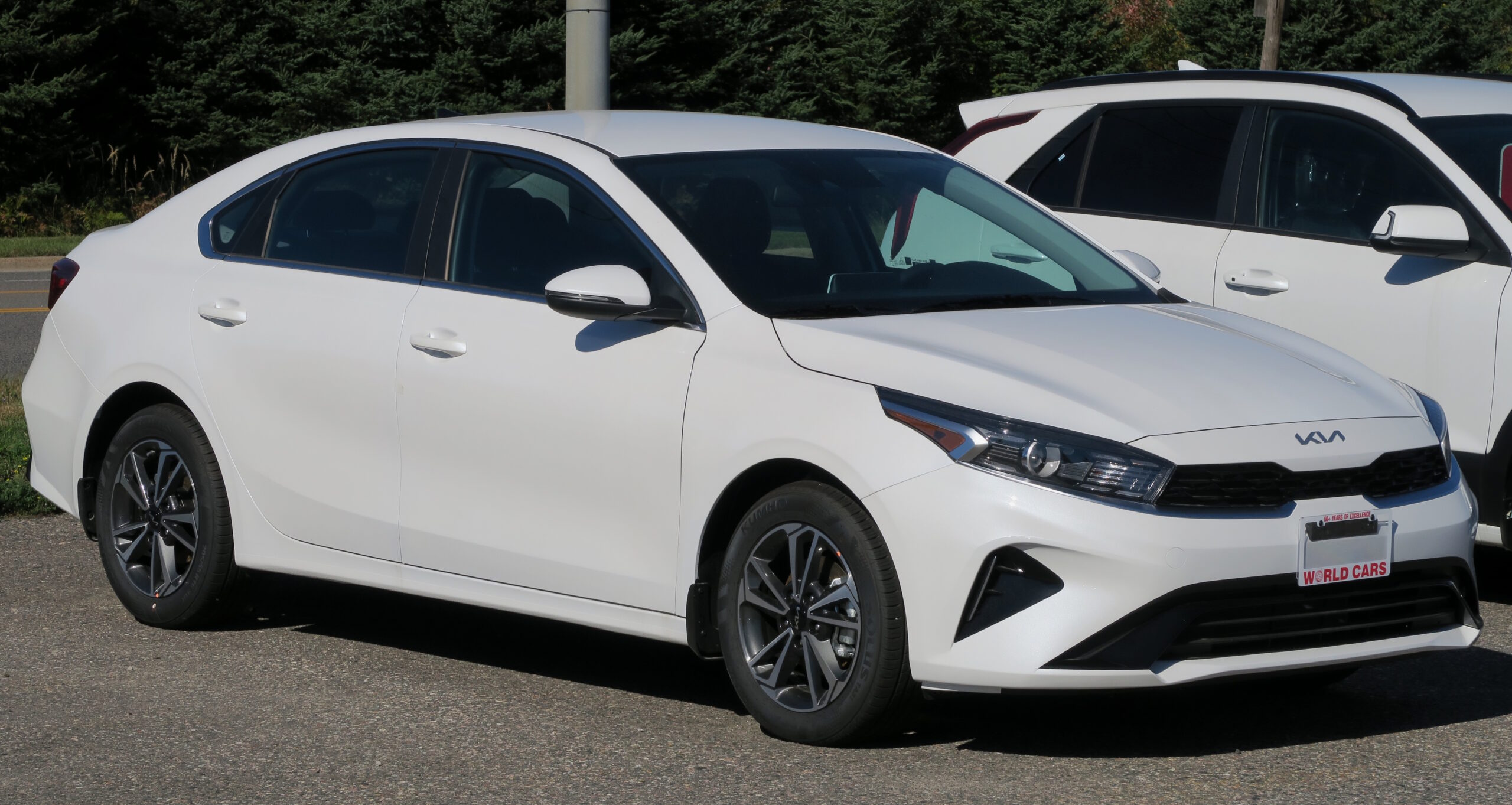
8. 2024 Kia Forte
The 2024 Kia Forte, despite being phased out and replaced by the K4, remains available and garners attention for its low price point. Its design, largely unchanged since 2019, may give the impression of a budget-friendly option. However, from a safety perspective, a deeper look into its performance reveals areas that fall significantly short of current standards.
Crash data indicates notable weaknesses. The National Highway Traffic Safety Administration (NHTSA) assigned the Forte a four-star overall rating, but its frontal crash score for the front passenger dropped to three stars. More critically, the Insurance Institute for Highway Safety (IIHS) rated the Forte “Poor” in both the moderate overlap front and side-impact tests, highlighting substantial deficiencies in crash protection.
Rear-seat safety in the Forte proved particularly problematic. IIHS testing revealed “Poor” ratings across the board for rear passenger head, neck, torso, and pelvis protection. During impact, the seatbelt system demonstrated inadequate restraint, with the belt slipping, and the dummy’s head violently contacting the window sill in the side test, indicating a high risk of injury for rear occupants.
Further safety concerns include “Poor” ratings for headlights, which are crucial for nighttime visibility and crash avoidance. Many of the vehicle’s crash prevention technologies, such as advanced automatic emergency braking, only meet federal standards on higher trim levels, meaning base models offer less protection. Even the structure and safety cage were rated “Marginal,” as was its pedestrian crash prevention capability, underscoring a broad pattern of safety shortcomings.
Considering a history of stacking complaints and its impending replacement, the 2024 Kia Forte presents a challenging proposition for buyers prioritizing robust safety performance. Its attractive price should be weighed carefully against these documented vulnerabilities in occupant and pedestrian protection.
Car Model Information: 2023 Kia Forte GT-Line
Name: Kia Forte
Manufacturer: Kia
Aka: Kia Cerato,Kia K3 (South Korea and China)
Production: 2008–2024
Class: Compact car
Layout: Front-engine, front-wheel drive layout
Related: Kia Ceed,Hyundai Elantra
Predecessor: Kia Cerato,Kia Spectra
Successor: Kia K4 (2024)
Categories: 2010s cars, ANCAP small family cars, All Wikipedia articles written in British English, All articles with dead YouTube links, All articles with dead external links
Summary: The Kia Forte (Korean: 기아 포르테), known as the K3 in Asia, the Forte K3 or Shuma in China and Cerato in South America, Australia, New Zealand and Russia, is a compact car manufactured by South Korean automaker Kia from mid-2008 until 2024, replacing the Kia Spectra. Throughout its production, it was available in two-door coupe, four-door sedan, five-door hatchback variants. It was not sold in Europe, which got the similarly sized Kia Ceed (except for Russia and Ukraine, where the Ceed and the Forte were sold together).
In some markets, such as Korea, Australia and Brazil, the Forte is marketed as Kia Cerato, replacing its predecessor of the same name. In Colombia and Singapore, the name Cerato Forte was used for the second generation, while Naza Automotive Manufacturing of Malaysia has assembled the vehicle since 2009, selling it there under the name Naza Forte.
Production of the Forte ended in 2024 and it was replaced by the K4, as Kia realigned their passenger car nomenclature, with the K3 name being transferred to a subcompact car replacing the Kia Rio.
Get more information about: Kia Forte
Buying a high-performing used car >>>
Brand: Kia Model: Forte
Price: $19,079 Mileage: 30,310 mi.
Read more about: Beyond the Badges: 14 Low-Key Trucks That Quietly Outperformed Expectations

9. 2025 Nissan Altima
The 2025 Nissan Altima continues its legacy as a midsize sedan, offering comfort and fuel economy. It notably includes Nissan’s Safety Shield 360 suite as standard across all trims, which provides features like emergency braking, blind-spot alerts, and rear cross-traffic warnings. While this standard inclusion of active safety technology is a positive step, a closer examination of its crashworthiness reveals that the Altima’s platform, largely unchanged since 2019, is beginning to show its age in crucial safety evaluations.
Recent IIHS testing has identified significant structural and occupant protection weaknesses. The Altima received a “Poor” rating in the revised side-impact test, indicating that its structure offers inadequate protection in side collisions. Furthermore, its performance in the moderate overlap front test resulted in an overall “Marginal” rating, suggesting limitations in frontal crash protection.
Rear passenger safety emerged as a particular concern. The Altima demonstrated “poor scores” for torso and pelvis impact protection for rear occupants, indicating that the vehicle’s design and restraint systems may not adequately safeguard passengers in the back. The safety cage itself also performed poorly in these evaluations, pointing to fundamental structural deficiencies that could compromise occupant space during a crash.
While the NHTSA awarded the Altima a five-star side crash rating, its frontal crash score dropped to four stars for both the driver and front passenger. Additional weaknesses were noted in its active safety features, with pedestrian detection rated “Marginal” and vehicle-to-vehicle crash prevention receiving a “Poor” rating. These results indicate that the Altima may not perform as effectively in preventing or mitigating various types of collisions.
For buyers who prioritize comprehensive crash protection, the Nissan Altima’s recent safety ratings suggest a widening gap compared to competitors that have undergone more recent and thorough safety enhancements. The presence of standard safety tech is a benefit, but the underlying crash performance raises significant questions about its overall protective capabilities.
Car Model Information: 2013 Nissan Altima 2.5 S
Name: Nissan Altima
Caption: 2024 Nissan Altima SR (L34; US)
Manufacturer: Nissan
Aka: Nissan Bluebird
Production: 1992–present
Class: Compact car
Predecessor: Nissan Bluebird,Nissan Stanza
ModelYears: 1993–present
Categories: 2000s cars, 2010s cars, 2020s cars, All-wheel-drive vehicles, All Wikipedia articles written in American English
Summary: The Nissan Altima is a mid-size car manufactured by Nissan since 1992. It is a continuation of the Nissan Bluebird line, which began in 1955.
The Altima has historically been larger, more powerful, and more luxurious than the Nissan Sentra but less so than the Nissan Maxima. The first through fourth-generation cars were manufactured exclusively in the United States and officially sold in North and South America, along with the Middle East and Australia. For other markets, Nissan sold a related mid-size sedan called the Nissan Teana which was between the Altima and Maxima in terms of size. In 2013, the Teana became a rebadged version of the fifth-generation Altima.
The name “Altima” was originally applied to a top trim line of the Nissan Leopard for the Japanese market in 1986, and then to the Nissan Laurel Altima mid-size car sold in Central America and the Caribbean before 1992. In 1992, Nissan discontinued the Stanza which was a Nissan Bluebird clone, replacing it with the US-built Altima, while remaining a compact car. The first Altima was produced in June 1992, as a 1993 model. All Altima models for the North American market were built in Smyrna, Tennessee, until June 2004, when Nissan’s Canton, Mississippi plant also began producing the model to meet high demand.
Get more information about: Nissan Altima
Buying a high-performing used car >>>
Brand: Nissan Model: Altima
Price: $8,961 Mileage: 80,139 mi.
Read more about: Remember These? 13 Rides That Went From Sought-After to Stale.
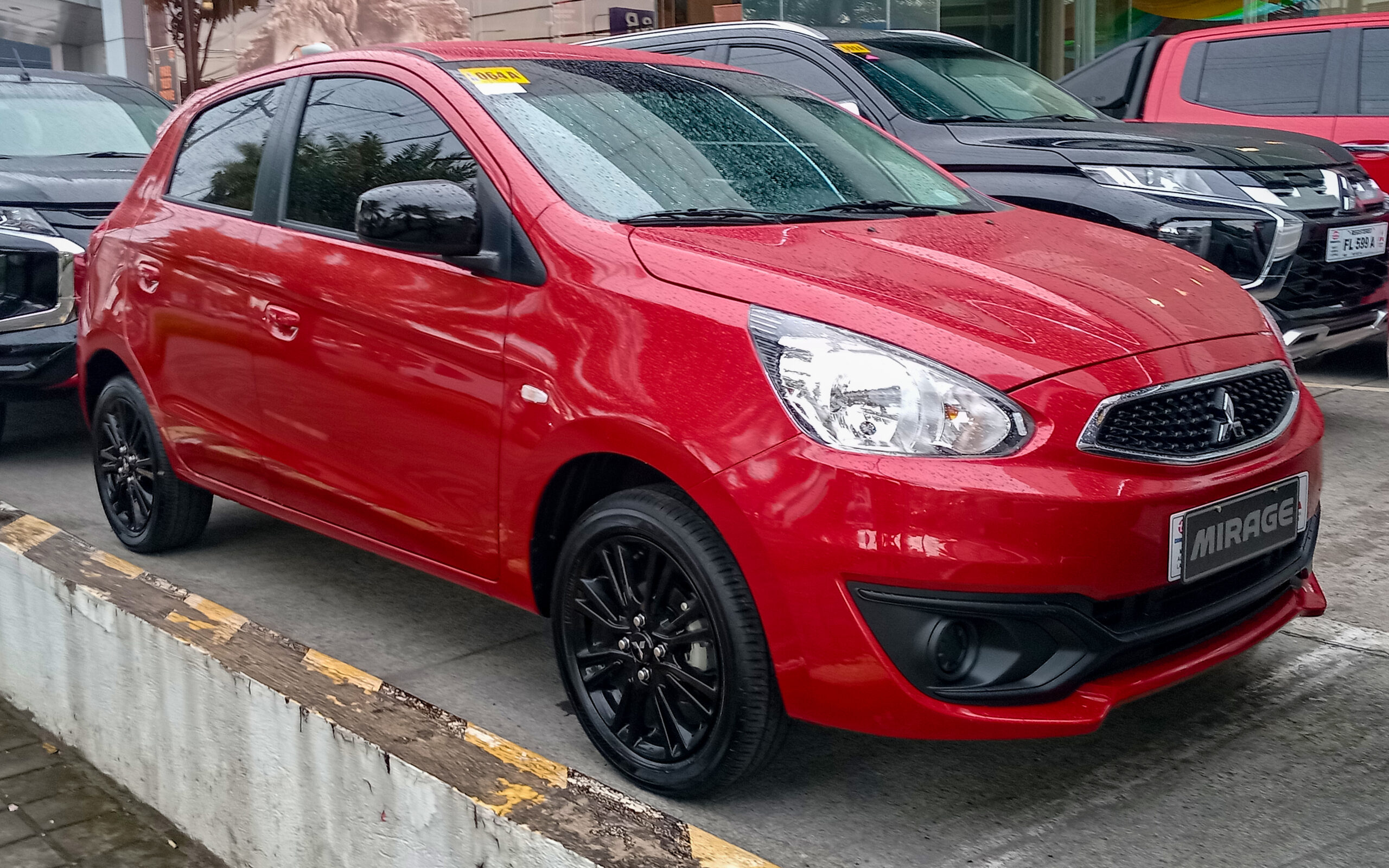
10. 2024 Mitsubishi Mirage
The 2024 Mitsubishi Mirage is often considered for its low starting price and impressive fuel economy, achieving up to 43 mpg on the highway. While it incorporates Mitsubishi’s Reinforced Impact Safety Evolution (RISE) body structure, which is designed to absorb impact energy, a detailed review of its safety performance indicates that affordability comes with substantial compromises in occupant protection.
NHTSA testing provided the Mirage with a four-star overall rating, but this average was significantly impacted by a concerning two-star side crash score, highlighting critical vulnerabilities in side-impact scenarios. The IIHS results further corroborate these concerns, with the small overlap front test yielding a “Marginal” rating due to clear signs of safety cage collapse and “Poor” protection for lower leg and foot injuries.
A particularly alarming finding is the Mirage’s rollover risk, which stands at 16.4%, the highest among the vehicles on this list. This statistic introduces a significant red flag regarding the vehicle’s stability and risk in single-vehicle crashes. Additionally, the frontal crash test revealed considerable intrusion into the driver’s space, indicating inadequate structural rigidity to maintain a safe occupant compartment during a head-on collision.
Standard safety features are limited; while forward collision mitigation and seven airbags are included, vital technologies like crash-imminent braking only meet federal standards on higher trim levels. Furthermore, dynamic brake support failed to meet standards entirely, and lane departure warning is restricted to more expensive models, leaving base models with minimal active safety support.
Historically, the Mitsubishi Mirage has consistently recorded high driver death rates, a serious metric that underscores its long-standing safety deficiencies. Mitsubishi’s decision to discontinue the model in America further reflects its challenges. For consumers prioritizing safety, the Mirage’s documented shortcomings suggest that opting for a more reliable, albeit potentially used, alternative might be a more prudent choice.
Car Model Information: 2024 Mitsubishi Mirage RALLIART
Name: Mitsubishi Mirage
Caption: Mitsubishi Mirage (sixth generation)
Manufacturer: Mitsubishi Motors
Production: 1978–2003,2012–present
Class: Subcompact car
Layout: Front-engine, front-wheel-drive
Predecessor: Mitsubishi Lancer (A70)
Successor: Mitsubishi Lancer#Eighth generation (2000)
Categories: 1980s cars, 1990s cars, 2000s cars, 2010s cars, 2020s cars
Summary: The Mitsubishi Mirage is a range of cars produced by the Japanese manufacturer Mitsubishi from 1978 until 2003 and again since. The hatchback models produced between 1978 and 2003 were classified as subcompact cars, while the sedan and station wagon models, marketed prominently as the Mitsubishi Lancer, were the compact offerings. The liftback introduced in 1988 complemented the sedan as an additional compact offering, and the coupé of 1991 fitted in with the subcompact range. The current Mirage model is a subcompact hatchback and sedan and it replaces the Mitsubishi Colt sold between 2002 and 2012.
Get more information about: Mitsubishi Mirage
Buying a high-performing used car >>>
Brand: Mitsubishi Model: Mirage
Price: $17,999 Mileage: 3,542 mi.
Read more about: Remember These? 13 Rides That Went From Sought-After to Stale.
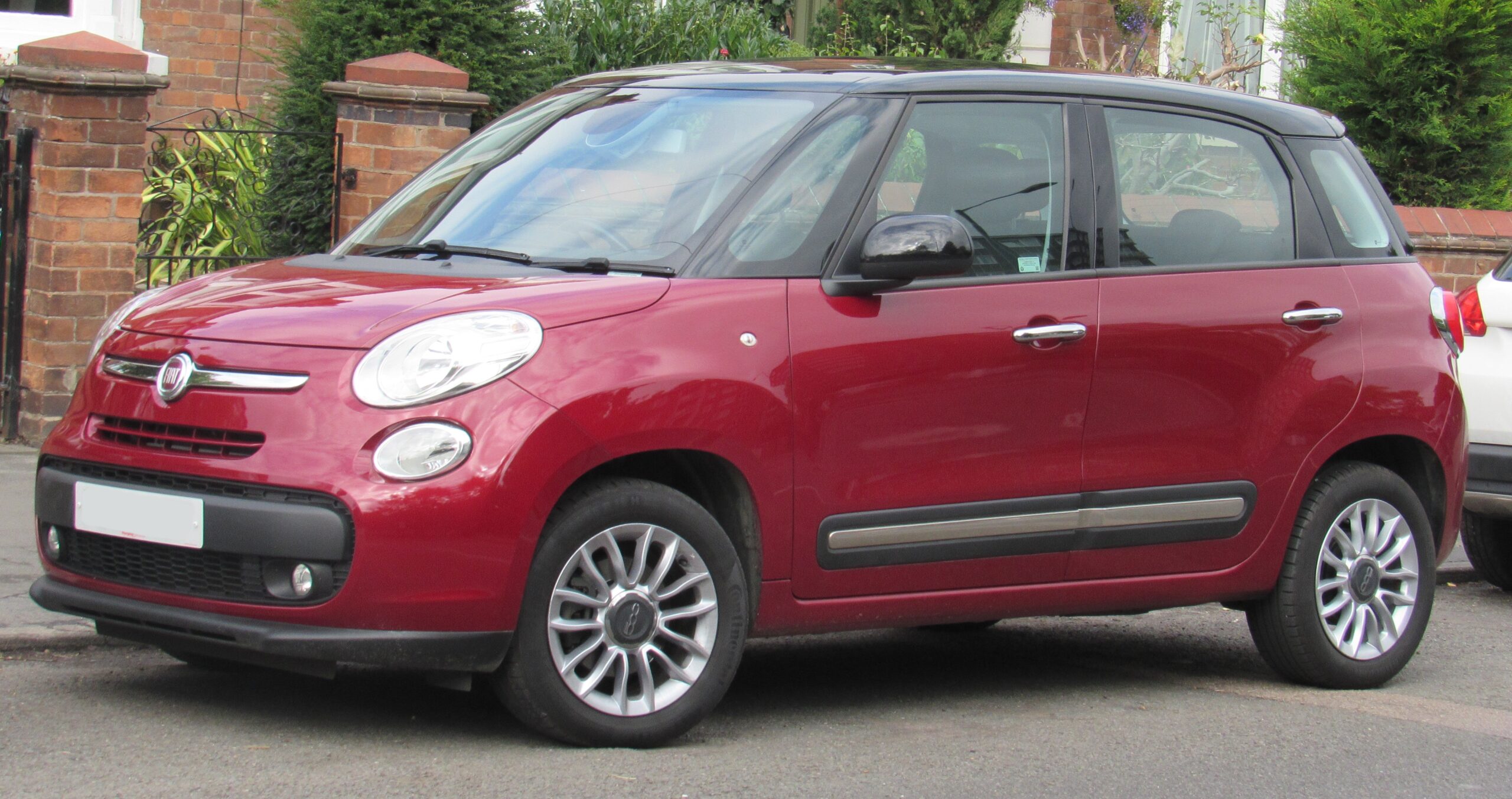
11. Fiat 500L
The Fiat 500L has consistently been identified as a vehicle with significant safety and reliability challenges. Consumer Reports, in its 2016 survey of over 740,000 vehicles, highlighted the 500L as having the worst reliability among all new cars. This poor reliability record often correlates with underlying quality issues that can impact overall safety perceptions and performance.
Beyond reliability, the 500L also exhibited concerning crash test results. It received a “Poor” rating in the IIHS small-overlap frontal test. This test is critical for evaluating protection in a common type of frontal collision, and the 500L’s performance indicates significant risks for occupants in such scenarios.
Consumer Reports also noted other operational and design flaws contributing to a dismal road test score. These included flat seats and an unconventional driving position, which can make simple vehicle operation difficult and contribute to driver discomfort or fatigue. Such ergonomic issues, while not direct crash safety factors, can indirectly affect a driver’s ability to maintain control and awareness on the road.
The overwhelmingly negative feedback from owners, with a majority expressing regret over their purchase, further underscores the vehicle’s shortcomings. For consumers seeking a compact car, the Fiat 500L’s documented issues in reliability, crashworthiness, and overall user satisfaction present a clear caution.
Read more about: Mechanics’ Honest Verdict: 6 Used Car Models You Should Absolutely Avoid Buying for Long-Term Peace of Mind
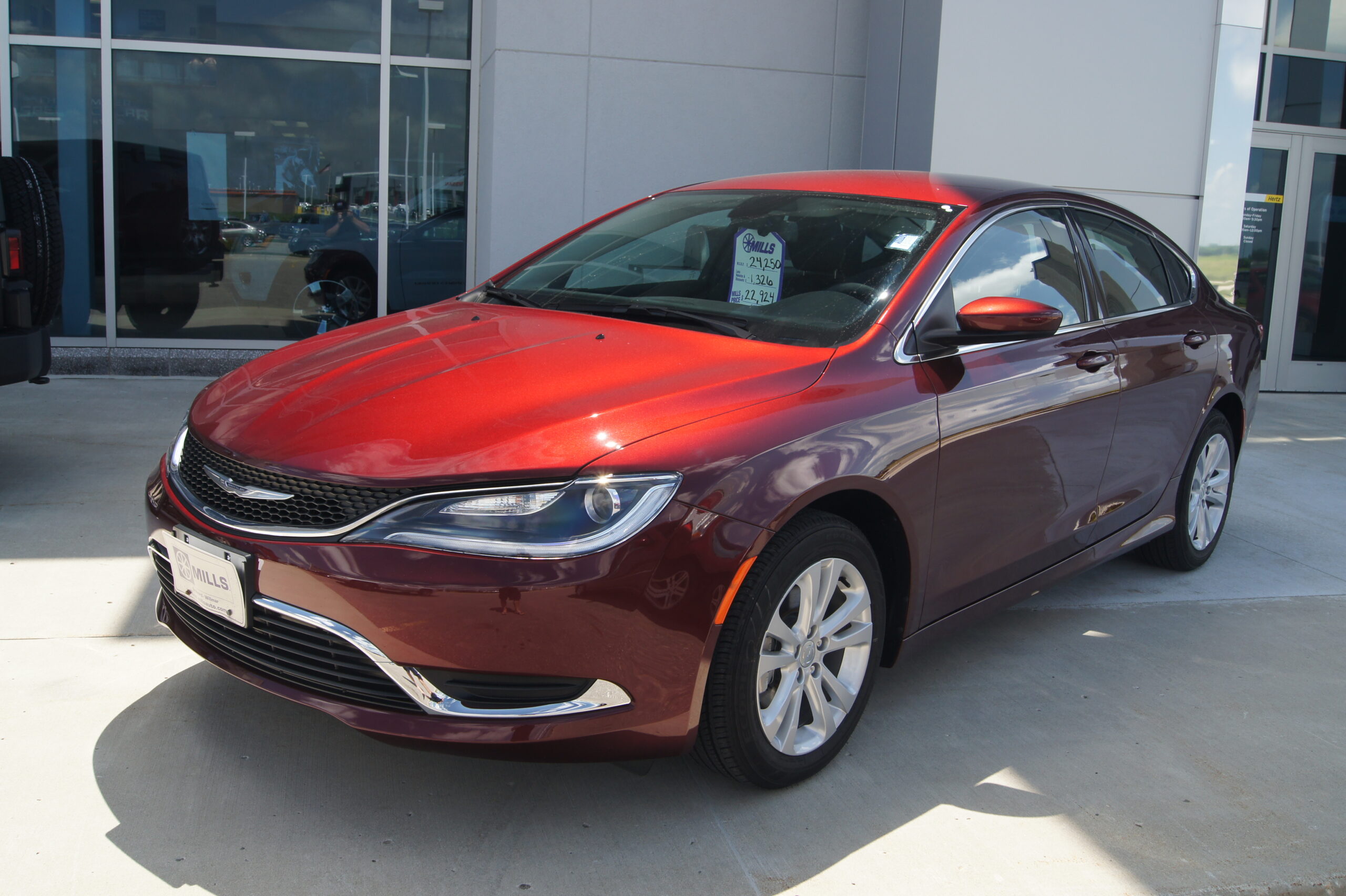
12. Chrysler 200
The Chrysler 200, a midsize sedan, has consistently underperformed in safety and overall evaluations within its competitive segment. Reviewers, including Consumer Reports, have described the vehicle’s driving characteristics as outdated, reminiscent of an earlier, less refined automotive era. This assessment points to a lack of modern engineering and design that impacts both performance and protective capabilities.
Specific criticisms include clumsy handling and a rough driving experience, which can compromise driver control and comfort. The four-cylinder engine has been noted for its underwhelming performance, and the transmission has been characterized as “uncooperative,” leading to an inconsistent and potentially distracting driving experience. Furthermore, the rear seats offer limited room, creating a cramped sensation for passengers.
In terms of critical safety and reliability metrics, the Chrysler 200 has received significantly subpar ratings. It earned the lowest overall road test score in its midsized sedan class, a direct indicator of its poor performance across various driving scenarios. This is compounded by the very lowest reliability rating in its category, suggesting frequent issues that could lead to unexpected breakdowns or safety concerns.
The combination of poor handling, an unrefined powertrain, inadequate passenger space, and low reliability scores places the Chrysler 200 at a distinct disadvantage compared to its peers. For prospective buyers, these comprehensive deficiencies warrant strong consideration, as they collectively undermine the vehicle’s appeal as a safe and dependable mode of transportation.
Car Model Information: 2013 Chrysler 200 Touring
Name: Chrysler 200
Manufacturer: Chrysler
Production: 2010–2016
ModelYears: 2011–2017
Assembly: Sterling Heights, Michigan
Class: Mid-size car
Sp: us
Predecessor: Chrysler Sebring
Categories: 2010s cars, All articles with dead external links, All articles with unsourced statements, Articles with dead external links from July 2020, Articles with permanently dead external links
Summary: The Chrysler 200 is a mid-size sedan that was manufactured and marketed by Chrysler from model years 2011 to 2017 across two generations in four-door sedan and two-door convertible (first generation only) body styles.
The 200 nameplate debuted on the 200C, a prototype hybrid vehicle shown at the 2009 North American International Auto Show in Detroit and based on the Chrysler 300. The 200C concept was engineered to accept either traditional gasoline, hybrid or full-electric powertrains.
Get more information about: Chrysler 200
Buying a high-performing used car >>>
Brand: Chrysler Model: 200
Price: $7,788 Mileage: 117,030 mi.
Read more about: Beyond the Icons: 13 Overlooked Pony Cars That Command Respect and Deserve a Second Look
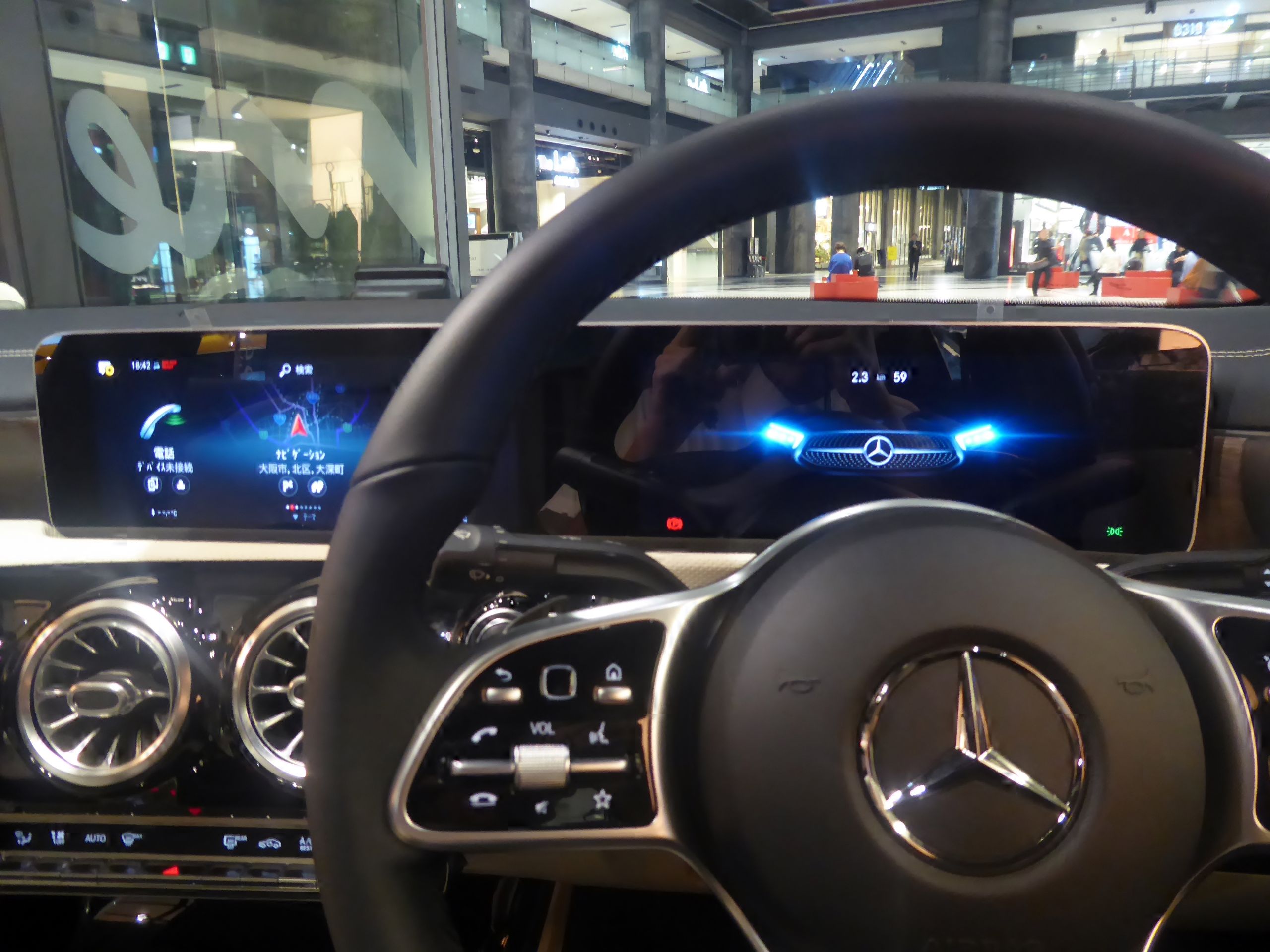
13. Mercedes-Benz CLA 250
The Mercedes-Benz CLA 250, positioned as a compact luxury car, has faced criticism that has notably impacted the brand’s reputation for quality and performance in recent years. Consumers typically expect a higher standard from a Mercedes-Benz vehicle, but the CLA 250 has demonstrated several areas of concern, particularly regarding its powertrain and structural comfort.
Both the engine and transmission have been criticized for lacking sufficient power and sophistication, resulting in an often unresponsive powertrain. This can compromise the driving experience and potentially affect a driver’s ability to react swiftly in certain traffic situations. Additionally, the vehicle has been described as having an extremely stiff ride, contributing to a less comfortable experience for occupants.
Ergonomic issues also feature in evaluations, with entry and exit from the vehicle being described as “difficult.” The interior has been noted for being both “noisy” and “cramped,” detracting from the expected luxury experience and potentially leading to driver and passenger discomfort on longer journeys. Such design choices, while not directly related to crash tests, can influence overall satisfaction and perceived safety.
Crucially, the CLA 250’s safety and reliability ratings have been reported as well below average for its class. Furthermore, consumers should be aware that the advertised starting price of $32,000 typically corresponds to a very basic model, with many expected luxury features requiring significant additional expenditure. This combination of subpar performance, comfort issues, and additional costs for features undermines its value as a luxury offering with robust safety.
Car Model Information: 2023 Genesis GV80 2.5T
Name: Mercedes-Benz CLA
Manufacturer: ubl
Production: 2013–present
Class: Subcompact executive car
BodyStyle: unbulleted list
Layout: unbulleted list
Categories: 2020s cars, All-wheel-drive vehicles, All Wikipedia articles written in British English, Articles with short description, CS1 Mexican Spanish-language sources (es-mx)
Summary: The Mercedes-Benz CLA is a series of luxury subcompact executive cars manufactured by Mercedes-Benz since 2013. The first generation was a four-door sedan based on the platform of the W176 A-Class and W246 B-Class compact cars, marketed as a four-door coupé. In 2015, Mercedes-Benz expanded the CLA family to include a station wagon configuration which it markets as a Shooting Brake.
The CLA is Mercedes-Benz’s first front-wheel drive vehicle offered in the American market. The CLA range is positioned above the A-Class and it is nearly on the level of the C-Class in the Mercedes model range, and models tend to be less practical than the A-Class it is based on.
The CLA first went on sale in Europe in April 2013, and was subsequently introduced in the United States in September 2013. Its largest markets are Western Europe and the United States. Global cumulative CLA sales reached 100,000 during its first year, cited as “our best launch in 20 years” by Mercedes-Benz. Worldwide, Mercedes-Benz sold about 750,000 units of the first generation.
Get more information about: Mercedes-Benz CLA
Buying a high-performing used car >>>
Brand: Mercedes-Benz Model: CLA 250
Price: $38,452 Mileage: 37,710 mi.
Read more about: The Curated Canvas: Inside Ralph Lauren’s Exclusive Garage of Vintage Race Cars and Modern Exotic Hypercars

14. Dodge Journey
The Dodge Journey, marketed as a family SUV, primarily competes on its attractive price point, which, at a starting price of $20,000, is lower than many comparable vehicles in its segment. However, a comprehensive evaluation by Consumer Reports indicates that this affordability comes at a significant cost in terms of performance and safety across almost every measure.
The three-row Journey has been criticized for its very cramped interior, making it less practical for families or extended travel. Its handling characteristics are described as poor, which can compromise vehicle control and stability, particularly in dynamic driving situations. Moreover, the V6 engine delivers the worst fuel economy in its vehicle class, leading to higher running costs despite the low purchase price.
Reliability is another critical area where the Dodge Journey scores significantly below average, suggesting that owners may encounter frequent mechanical issues. From a safety perspective, the vehicle delivered a “dreadful performance” in its IIHS small-overlap frontal crash test, indicating substantial deficiencies in protecting occupants during a common and severe type of frontal collision.
Car Model Information: 2019 Dodge Journey SE
Name: Dodge Journey
Caption: 2012 Dodge Journey
Manufacturer: Dodge
Aka: Fiat Freemont,Dodge JC (Japan),Dodge JCUV (China)
Production: 2008–2020
ModelYears: 2009–2020,2011–2015 (Freemont)
Assembly: Toluca, Mexico
Designer: Ryan Nagode
Class: Mid-size crossover SUV
BodyStyle: SUV
Platform: Mitsubishi GS platform
Related: Chrysler 200,Chrysler Sebring,Dodge Avenger
Layout: Front-engine, front-wheel-drive layout
Engine: ubl
Transmission: Ultradrive#40TES/41TES
Wheelbase: 2890 mm
Abbr: on
Order: flip
Length: 192.4 in
Width: 72.2 in
Height: 66.6 in
Weight: 3818 lb
Predecessor: Fiat Ulysse,Fiat Croma
Successor: Dodge Journey (2021)
Categories: 2010s cars, 2020s cars, All-wheel-drive vehicles, All articles with dead external links, All articles with unsourced statements
Summary: The Dodge Journey is a mid-size crossover SUV manufactured and marketed by Fiat Chrysler Automobiles’ Dodge brand for model years 2009 to 2020 over a single generation, with a facelift for the 2011 model year. The Journey was styled by Ryan Nagode, and was marketed globally in both left- and right-hand drive, including as the Fiat Freemont.
Internally identified as the JC49, the Journey shares FCA’s global D-segment platform with the Dodge Avenger and a nearly identical wheelbase to the outgoing short-wheelbase (SWB) Dodge Caravan.
Having debuted at the 2007 Frankfurt Motor Show, the Journey subsequently appeared at the 2009 Frankfurt Motor Show. All models were manufactured in Mexico at FCA’s Toluca Assembly facility, with just over 1.1 million manufactured before production ended in 2020.
Get more information about: Dodge Journey
Buying a high-performing used car >>>
Brand: Dodge Model: Journey
Price: $10,765 Mileage: 83,381 mi.
Read more about: Beyond the Icons: 13 Overlooked Pony Cars That Command Respect and Deserve a Second Look
These combined shortcomings present a clear caution for prospective buyers. While the upfront cost may seem appealing, the documented issues in interior space, handling, fuel economy, reliability, and fundamental crash protection suggest that the Dodge Journey represents a considerable risk. For families prioritizing safety and long-term dependability, more secure alternatives are available within the SUV market.



